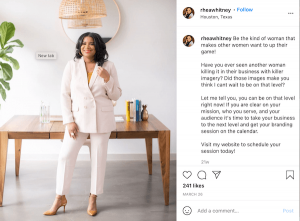Will 2022 Be Addressable’s Breakout Year?
Where does addressable TV advertising stand now, what challenges remain, and will 2022 really prove to be a tipping point?
Executives from agencies, television and ad-tech companies offered their takes during a recent webinar held by Go Addressable, the initiative formed this year by Altice USA, Charter Communications, Comcast, Cox Media, WarnerMedia/DirecTV Dish Media and Vizio to help accelerate adoption of the technology.
The positive indicators, according to a new Advertiser Perceptions survey conducted for Go Addressable, include 88% of agencies and marketers saying they view addressability as important to the future of television advertising, three quarters viewing addressable linear as key to achieving marketing objectives, and one quarter of those who haven’t used addressable saying they’ll start doing so next year.
Still, just one in 10 advertisers say they’re “very satisfied” with current addressable options, whereas one in four say they’re unsatisfied.
“There’s still work to be done,” summed up Marcien Jenckes, president of advertising, Comcast.
Asked where addressable currently fits into overall strategy, Dave Campanelli, executive vice president, chief investment officer, Horizon Media, described it as “important but complementary.”
Some clients have had dedicated addressable budgets for several years now, and while they’ve been slow to increase them, the agency expects spend to accelerate over the next couple of years, as the industry cooperates to overcome remaining obstacles — like “having to use five or six sources to get to national scale,” Campanelli said. Agencies’ development of their own addressable networks will also speed adoption, he added.
Cara Lewis, executive vice president, head of U.S. media investment at Dentsu, agreed, adding that “clients want awareness, but they also want business outcomes — and adding addressable linear is one way to get there.”
“Digital viewing is driving media strategies toward addressable,” although tipping-point momentum may not be reached until 2023, noted Marissa Jimenez, managing director, Finecast.
In addition, addressable is getting more leverage as the need to deal with traditional linear TV challenges breaks down siloes, spurring more collaboration between sell-side executives who have deep knowledge of the complex addressable ecosystem, investment teams, ad-tech companies and other players, pointed out Nicole Saewert Whitesel, executive vice president, advanced TV, client success, Publicis Media.
In the months ahead, marketers should use addressable to better understand the segments within their audiences, and how large addressable segments should be within the overall media plan, so that they’re ready when it’s time to scale their programs, agreed Saewert Whitesel and Lewis.
Campanelli added that addressable should be valuable not only for segment targeting, but as a reach extender, as advertisers identify which households are high versus low linear users.
“Any linear advertiser can also take advantage of addressable,” he said. “There’s a role for addressable for virtually every brand,” although the extent of its use will depend on the nature of the brand.
When it comes to the areas where improvement is most needed, scale and measurement/reporting run neck-in-neck.
Campanelli said that unlocking linear networks’ national inventory for addressable is the next big step.
While acknowledging that thorny issues include how one advertiser’s addressable buy impacts the audience that other advertisers in a program are getting, and whether desirable addressable segments should be priced at a large premium, he said that “it’s important for the industry to figure these out.”
Lewis suggested that given networks’ reluctance on this front and the difficult issues involved, more rapid and significant progress might be achieved in the short term by focusing on reporting and achieving scale on the local level via cooperation.
“We need improvements on the reporting end — a lot of clients want a faster timeframe, and we need to get better at using data and reports,” she said.
Getting reports that span MVPDs (multichannel video programming distributors) and meshing reporting of connected TV and addressable linear are key objectives, and increasing the availability of set-top box data is important in enhancing one-to-one capabilities, she said.
It can be hard to assess and manage campaigns across multiple media partners, and addressable’s performance compared to regular linear, said Saewert Whitesel, and faster reporting is needed to support today’s increasingly dynamic optimization of video.
“We need to be able to incorporate addressable into the rest of a campaign’s reporting, instead of looking at siloes, and move away from having to have an attribution study for every campaign,” agreed Finecast’s Jimenez.
Another item on 2020 wish lists: Easier, more cost-efficient ways to create multiple versions of creative to leverage the messaging personalization opportunity that’s at the core of addressable’s value.
Lewis noted that industry collaboration might conceivably make it possible to share some video assets that are not brand-specific and have not been used in actual ads.
Next column: insights on addressable’s technical status and media companies’ plans.
(17)






